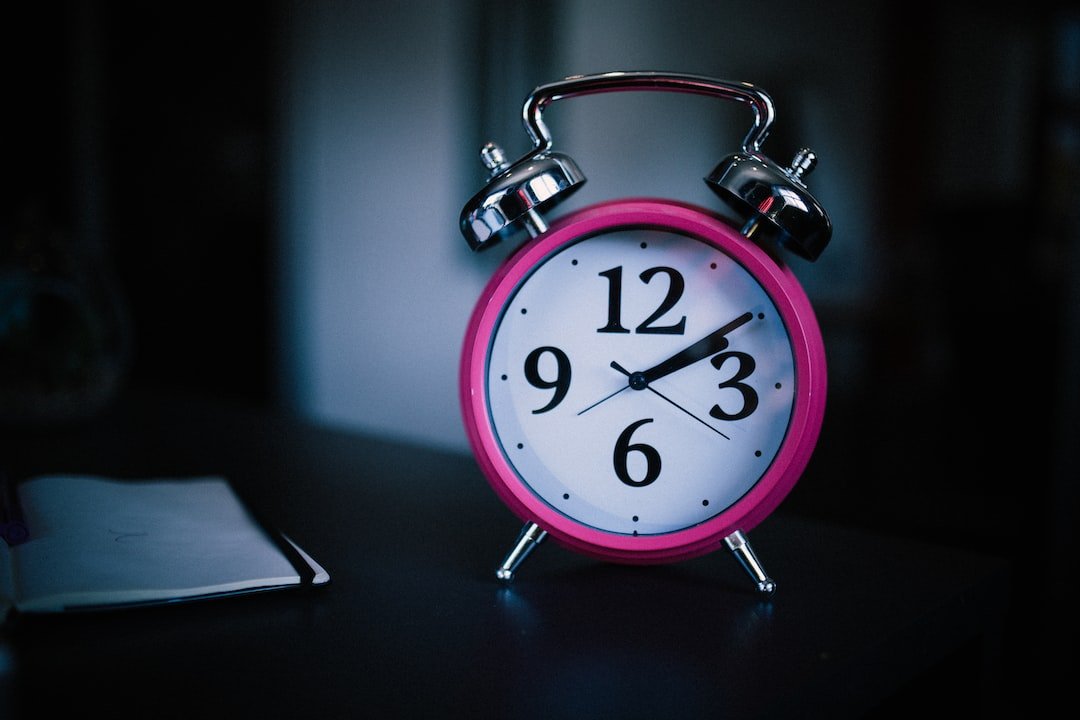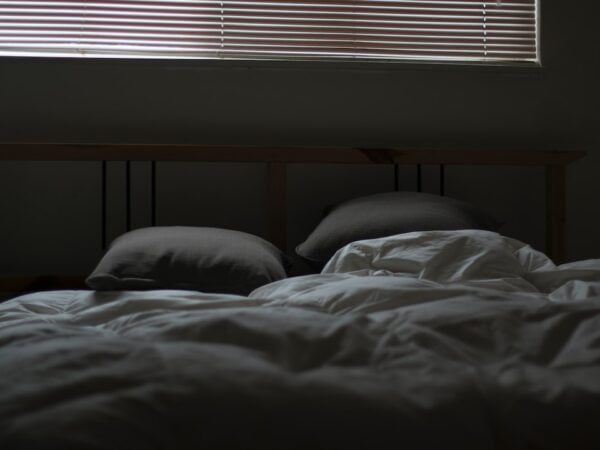
Sleep Disorders: Understanding the Different Types and How to Manage Them
Sleep is a fundamental aspect of our lives that is often taken for granted. It is during sleep that our bodies and minds have the opportunity to rest, repair, and rejuvenate. Without adequate sleep, our overall health and well-being can suffer. Sleep disorders, which encompass a wide range of conditions that affect the quality and quantity of sleep, can have a significant impact on daily life.
Key Takeaways
- Sleep disorders can have a significant impact on overall health and well-being.
- Insomnia is a common sleep disorder that can be caused by a variety of factors and can be treated with medication and therapy.
- Sleep apnea is a condition where breathing is interrupted during sleep and can be treated with lifestyle changes, CPAP machines, and surgery.
- Narcolepsy is a neurological disorder that causes excessive daytime sleepiness and can be managed with medication and lifestyle changes.
- Restless leg syndrome is a condition that causes uncomfortable sensations in the legs and can be treated with medication and lifestyle changes.
Insomnia: Causes, Symptoms, and Treatment Options
Insomnia is one of the most common sleep disorders, affecting millions of people worldwide. It is characterized by difficulty falling asleep, staying asleep, or both. There are several potential causes of insomnia, including stress, anxiety, depression, certain medications, and underlying medical conditions. Symptoms of insomnia can vary from person to person but often include fatigue, irritability, difficulty concentrating, and daytime sleepiness.
Treatment options for insomnia can range from lifestyle changes to medication. It is important to establish good sleep hygiene practices, such as maintaining a consistent sleep schedule, creating a relaxing bedtime routine, and creating a comfortable sleep environment. Cognitive-behavioral therapy for insomnia (CBT-I) is a highly effective non-medication treatment option that focuses on changing negative thoughts and behaviors related to sleep. In some cases, medication may be prescribed to help regulate sleep patterns.
Sleep Apnea: Understanding the Condition and Treatment Options
Sleep apnea is a sleep disorder characterized by pauses in breathing or shallow breaths during sleep. These pauses can last for a few seconds to minutes and can occur multiple times throughout the night. There are three main types of sleep apnea: obstructive sleep apnea (OSA), central sleep apnea (CSA), and complex sleep apnea syndrome (CSAS).
OSA is the most common type of sleep apnea and occurs when the muscles in the back of the throat fail to keep the airway open. CSA, on the other hand, is caused by a failure of the brain to send the proper signals to the muscles that control breathing. CSAS is a combination of both OSA and CSA.
Symptoms of sleep apnea can include loud snoring, gasping or choking during sleep, excessive daytime sleepiness, morning headaches, and difficulty concentrating. If left untreated, sleep apnea can lead to serious health complications, including high blood pressure, heart disease, and stroke.
Treatment options for sleep apnea depend on the severity and type of sleep apnea. Lifestyle changes, such as weight loss and avoiding alcohol and sedatives before bed, can help alleviate symptoms. Continuous positive airway pressure (CPAP) therapy is a common treatment option for OSA and involves wearing a mask over the nose or mouth during sleep to deliver a constant flow of air pressure to keep the airway open. Other treatment options include oral appliances, surgery, and positional therapy.
Narcolepsy: Causes, Symptoms, and Management Strategies
| Topic | Description |
|---|---|
| Narcolepsy | A chronic sleep disorder characterized by overwhelming daytime drowsiness and sudden attacks of sleep. |
| Causes | Exact cause is unknown, but it is believed to be related to a combination of genetic and environmental factors. |
| Symptoms | Excessive daytime sleepiness, sudden loss of muscle tone, sleep paralysis, hallucinations, disrupted nighttime sleep. |
| Diagnosis | Based on medical history, physical exam, sleep studies, and other tests. |
| Treatment | Medications to manage symptoms, lifestyle changes, and behavioral therapy. |
| Management Strategies | Establishing a regular sleep schedule, taking short naps, avoiding caffeine and alcohol, and practicing good sleep hygiene. |
Narcolepsy is a neurological disorder that affects the brain’s ability to regulate sleep-wake cycles. It is characterized by excessive daytime sleepiness, sudden loss of muscle tone (cataplexy), hallucinations, and sleep paralysis. The exact cause of narcolepsy is unknown, but it is believed to involve a combination of genetic and environmental factors.
Symptoms of narcolepsy can significantly impact daily life and can make it difficult to perform everyday tasks. Excessive daytime sleepiness can lead to difficulty staying awake during work or school hours, while cataplexy can cause sudden muscle weakness or loss of control in response to strong emotions.
Management strategies for narcolepsy often involve a combination of medication and lifestyle changes. Stimulant medications can help promote wakefulness during the day, while antidepressant medications can help manage cataplexy and other symptoms. Lifestyle changes, such as maintaining a regular sleep schedule, taking short naps during the day, and avoiding caffeine and alcohol, can also help manage symptoms.
Restless Leg Syndrome: Understanding the Condition and Treatment Options
Restless leg syndrome (RLS) is a neurological disorder characterized by an irresistible urge to move the legs, often accompanied by uncomfortable sensations. These sensations are often described as crawling, tingling, or burning and are typically worse at night or during periods of inactivity. The exact cause of RLS is unknown, but it is believed to involve a combination of genetic and environmental factors.
Symptoms of RLS can significantly disrupt sleep and lead to daytime fatigue and irritability. Treatment options for RLS include lifestyle changes, such as regular exercise and avoiding caffeine and alcohol, as well as medication. Medications that increase dopamine levels in the brain, such as dopamine agonists, are often prescribed to help manage symptoms.
Circadian Rhythm Disorders: Causes, Symptoms, and Treatment Options
Circadian rhythm disorders are a group of sleep disorders that occur when an individual’s internal body clock is out of sync with the external environment. This can result in difficulties falling asleep or staying asleep at the desired times. Common types of circadian rhythm disorders include delayed sleep phase disorder (DSPD), advanced sleep phase disorder (ASPD), and shift work disorder.
Symptoms of circadian rhythm disorders can vary depending on the specific type but often include difficulty falling asleep or waking up at the desired times, excessive daytime sleepiness, and difficulty concentrating. Treatment options for circadian rhythm disorders often involve a combination of light therapy, melatonin supplementation, and behavioral interventions to help regulate sleep-wake cycles.
Parasomnias: Understanding the Different Types and Management Strategies
Parasomnias are a group of sleep disorders that involve abnormal behaviors or experiences during sleep. They can occur during any stage of sleep and can range from mild to severe. Common types of parasomnias include sleepwalking, sleep talking, night terrors, and sleep-related eating disorder.
Symptoms of parasomnias can vary depending on the specific type but often include abnormal movements or behaviors during sleep, confusion upon waking, and difficulty remembering the events. Management strategies for parasomnias often involve creating a safe sleep environment, implementing relaxation techniques before bed, and addressing any underlying causes or triggers.
Sleepwalking and Sleep Talking: Causes, Symptoms, and Management Strategies
Sleepwalking and sleep talking are two common parasomnias that can occur during non-REM sleep. Sleepwalking involves getting out of bed and walking or performing other complex behaviors while still asleep. Sleep talking involves talking or making sounds during sleep.
The exact causes of sleepwalking and sleep talking are unknown but are believed to involve a combination of genetic and environmental factors. Symptoms of sleepwalking and sleep talking can range from mild to severe and can include wandering around the house, engaging in potentially dangerous activities, and speaking incoherently.
Management strategies for sleepwalking and sleep talking often involve creating a safe sleep environment by removing any potential hazards or obstacles. It is also important to establish a consistent sleep schedule and practice good sleep hygiene. In some cases, medication may be prescribed to help manage symptoms.
REM Sleep Behavior Disorder: Understanding the Condition and Treatment Options
REM sleep behavior disorder (RBD) is a parasomnia that involves acting out vivid dreams during REM sleep. Unlike normal REM sleep, where the body is typically paralyzed to prevent acting out dreams, individuals with RBD have a loss of muscle atonia, allowing them to physically act out their dreams. The exact cause of RBD is unknown but is believed to involve abnormalities in the brainstem.
Symptoms of RBD can include violent movements during sleep, shouting or screaming, and potentially injuring oneself or a sleep partner. Treatment options for RBD often involve medication, such as clonazepam, to help suppress muscle activity during REM sleep. Creating a safe sleep environment is also important to prevent injury.
Tips for Better Sleep: Lifestyle Changes and Strategies for Managing Sleep Disorders
In addition to specific treatment options for each sleep disorder, there are several general tips and strategies that can help improve sleep quality and manage sleep disorders. Good sleep hygiene practices, such as maintaining a consistent sleep schedule, creating a relaxing bedtime routine, and creating a comfortable sleep environment, are essential for promoting healthy sleep.
Regular exercise can also help improve sleep quality, but it is important to avoid exercising too close to bedtime as it can interfere with falling asleep. Avoiding caffeine and alcohol before bed is also important, as they can disrupt sleep patterns.
For individuals with sleep disorders, it may be helpful to keep a sleep diary to track patterns and identify potential triggers or factors that may be contributing to the problem. Seeking support from healthcare professionals, such as sleep specialists or therapists, can also provide valuable guidance and treatment options.
Sleep disorders can have a significant impact on daily life, affecting both physical and mental health. However, by understanding the different types of sleep disorders and implementing lifestyle changes and management strategies, individuals can improve their sleep and overall health. It is important to seek professional help if experiencing persistent sleep problems to receive an accurate diagnosis and appropriate treatment. With the right approach, better sleep is within reach for everyone.
FAQs
What are sleep disorders?
Sleep disorders are conditions that affect the ability to sleep well on a regular basis. They can be caused by a variety of factors, including medical conditions, lifestyle choices, and environmental factors.
What are the different types of sleep disorders?
There are many different types of sleep disorders, including insomnia, sleep apnea, restless leg syndrome, narcolepsy, and parasomnias.
What are the symptoms of sleep disorders?
The symptoms of sleep disorders can vary depending on the type of disorder, but common symptoms include difficulty falling or staying asleep, excessive daytime sleepiness, snoring, gasping or choking during sleep, and abnormal movements during sleep.
What causes sleep disorders?
Sleep disorders can be caused by a variety of factors, including medical conditions such as depression or anxiety, lifestyle choices such as caffeine or alcohol consumption, and environmental factors such as noise or light pollution.
How are sleep disorders diagnosed?
Sleep disorders are typically diagnosed through a combination of medical history, physical examination, and sleep studies. Sleep studies may involve monitoring brain waves, heart rate, and breathing patterns during sleep.
What are the treatments for sleep disorders?
The treatment for sleep disorders depends on the type and severity of the disorder. Treatment options may include lifestyle changes, medication, therapy, or the use of devices such as a continuous positive airway pressure (CPAP) machine for sleep apnea.
Can sleep disorders be prevented?
While some sleep disorders may not be preventable, there are steps that can be taken to promote healthy sleep habits, such as maintaining a regular sleep schedule, avoiding caffeine and alcohol before bedtime, and creating a comfortable sleep environment.


















